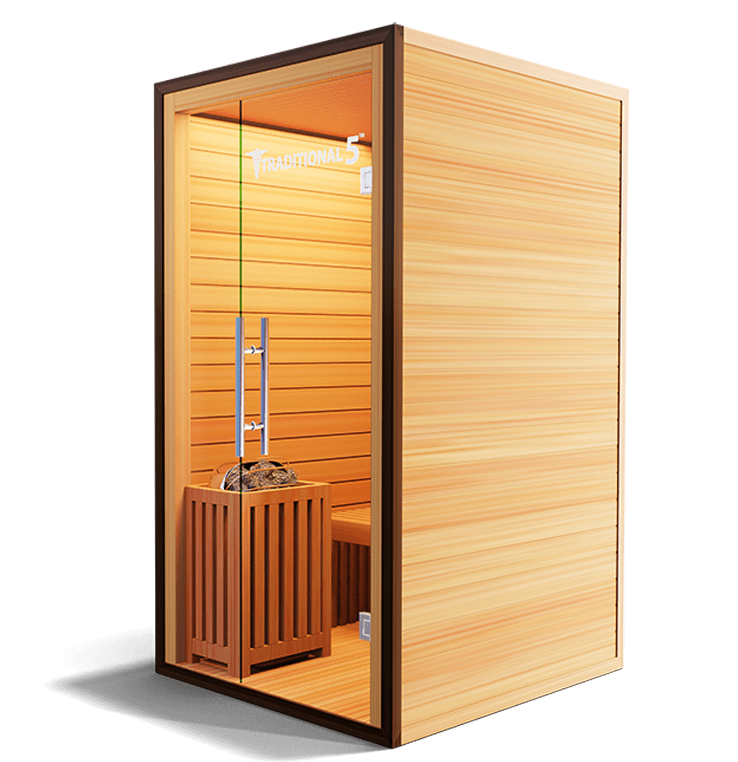Traditional Sauna for Dummies
Traditional Sauna for Dummies
Blog Article
Things about Traditional Sauna
Table of ContentsWhat Does Traditional Sauna Mean?Things about Traditional SaunaIndicators on Traditional Sauna You Should KnowTraditional Sauna Things To Know Before You Buy
Many of the weight shed in a sauna is water loss and is re-gained upon rehydrating. However, undeniably sauna can be an essential part of a healthy weight management program. To take a look at the differences in between typical and IR saunas, I will certainly separate these into proven, academic, and fabricated distinctions.Hence, the most popular point in the saunawhich is at the ceiling straight above the sauna heateris usually between 185 and 190 F. Traditional Sauna. Claims that a conventional sauna exceeds 200 F is simply not real and not suitable for electric saunas marketed in the US. The temperature for a far-infrared sauna is generally set between 120 and 140 F; nonetheless, unlike the conventional sauna, the goal in and IR space is not to achieve a high temperature level
Due to this, the temperature distinction is practically irrelevant, given that excessive sweating causes both sauna types, yet the technique of heating the body is various. In an IR sauna the bather will really feel warm and will certainly sweat a lot, however at a lot lower temperature levels. Hence, if the objective is to spend longer amount of times in the sauna, the IR sauna is a great selection.

Getting The Traditional Sauna To Work
When the high temperature level is achieved, the elements cycle on and off to maintain the high temperature. Most conventional sauna individuals take pleasure in putting water over the rocks to produce heavy steam to raise sauna humidity degrees. The advantages of putting water over the rocks consist of: making the area more comfortable, moistening the nasal passages, and allowing the use of aromatherapy by mixing vital oils with the water.
In a far-infrared sauna, the warm front penetrate the body to effectively heat the body and raise the body core temperature. To achieve this increased temperature, Far-infrared emitters create infrared power which is close to the very same wavelength as that which the body normally emitsoften referred to as the "Important Variety" of 7 to 14 microns), so the power is well gotten by the body.
When the energy goes into the body, it triggers the body temperature to enhance and ultimately results in Learn More Here perspiration. In an infrared sauna it is essential for the emitters/heaters to continue to be on virtually frequently. Given that there is no mass of rocks to maintain warm, the sauna will cool down if the emitters closed off.
As pointed out above, the sauna bather in an infrared room intends to position himself before running emitters to get maximum advantage from the warmth. The heating time for both areas can be extremely different, depending upon how the rooms are made use of. For a typical sauna, a bather must enable 30-40 minutes for the area to attain a wanted temperature and to correctly pre-heat the rocks.
Traditional Sauna Can Be Fun For Anyone
A well constructed sauna will normally achieve a temperature level of 150-160 F in concerning 30-40 minutes. For hotter temperatures, the space might require to warmth for a longer period.
To some, 15 minutes was "thrown away" while the infrared power heated the wood panels as opposed to warming this content a body, while others find a pre-heated room to be much more comfy and think an elevated beginning temperature is needed to start sweating. The size of suggested usage for each and every area is approximately the same (10-15 minutes per session); however, due to the lower see here now air temperatures and the ability to really feel the results of infrared warmth much faster than a traditional sauna, it is not uncommon for a person to invest a total amount of 20-30 mins in an infrared sauna.
Conventional saunas tend to be larger (therefore make use of more electrical power) than infrared saunas, although traditional saunas are certainly available in one and 2 individual dimensions. For a two-person typical sauna, 5x6 or 5x7 dimension is most popular. The top bench can conveniently seat two or three individuals and is additionally long sufficient to rest during the sauna session.


The ordinary expense per kWH of electrical energy in the U.S. is approximately $0.11, so a 4.5 kW heater will set you back approximately $.50 to compete one hour, if the heater runs continually for one hour. Normally a sauna heating unit will run for 75% of the first hour and 50% of subsequent hours on because the elements cycle once the established temperature is achieved.
The Of Traditional Sauna
A 2 individual far-infrared area is generally literally smaller sized than a typical sauna, typically concerning 4' x 4' or smaller sized. The IR heating system is usually 1.5-1.7 kW making use of a 120 volt 15 amp plug-in solution. Because the space can be utilized earlier than a sauna area, we will assume the room is utilized for to of an hour including warm up time.
There is a rarely talked about difference in the social experience between the two rooms. While our culture has shed several of the social benefit of the standard sauna experience, it can be extremely socially rewarding. From family time in the sauna, to heart-felt discussions with better halves, to sauna partiesthe typical sauna experience can bring about intimate interacting socially.
A lot of higher end infrared areas include tinted light therapy, sound systems and full-glass fronts.
Report this page